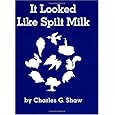I am on another vacation this weekend..this time to celebrate the wedding of my fourth grade colleague Joe Curtin! So, I peeked back through my posts and picked an oldie but a goodie that I posted back in December. Enjoy!
I am all about authentic assessments. I want to peer into the child's mind and see what she or he really understands about a concept that I have taught. However, one of the drawbacks to this is TIME. It takes time to check work and make comments and provide appropriate feedback. Right?
This fall I was introduced to a new element of formative instruction that will be implemented in all the FOSS 3rd edition NEW units. I sat with my jaw wide open as I thought...this is what I've been waiting for. So let me tell you how it's done!
Step one: When you are teaching a lesson, pick out one or two main concepts that you want them to understand. Write them on the sheet I have provided for FREE in google docs. (right under the Teachers Pay Teachers link)
Step two: Design in your lesson a way for the students to explain what they learned at the end of the day. Suggestions include: answer the focus question based on what you learned today, do a 3,2,1 reflection, a reflection such as Today I learned.... (make sure you tell them to write about the concept you are checking) or a simple Quick Write to explain the concept.
Step Three: After teaching the lesson, have the students turn in their science notebooks open to the page they were working on. Research has shown that this saves 25 minutes of teacher time - looking for the correct page to check! I also make sure that I have all journals turned in before I grade. This is important for the next step.
Step Four: Read the reflection pieces. If the student "gets it", then you only need to mark with a check. If they do not get it, then you write down what they made an error on so that you can get in touch with them tomorrow and clear up the misunderstanding.
The Formative Assessment sheet will look like this:
Quick check Assessment for Science
Notebooks
Date:___________________________
Concept
|
A force can
be a push or a pull
|
Got it!
|
√√√√√
|
Needs support
|
Brian –
forces can only be a push
Cindy –
pushes cause the force
|
I absolutely love this formative assessment technique because it keeps me on track. I am able to check in with kids who may not understand a lesson quickly instead of waiting until the final test to see they didn't get it at all.
I have used this technique in Math, Reading, and Social Studies as well. It is a great way to keep track of your student's learning in all subjects.











